
Vallombrosa is a Benedictine abbey in the comune of Reggello, about 30 km south-east of Florence, in the Apennines, surrounded by forests of beech and firs. It was founded by Florentine nobleman Giovanni Gualberto in 1038 and became the mother house of the Vallumbrosan Order.

Lodovico Cardi, also known as Cigoli, was an Italian painter and architect of the late Mannerist and early Baroque period, trained and active in his early career in Florence, and spending the last nine years of his life in Rome.
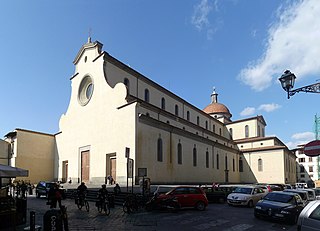
The Basilica di Santo Spirito is a church in Florence, Italy. Usually referred to simply as Santo Spirito, it is located in the Oltrarno quarter, facing the square with the same name. The interior of the building – internal length 97 m (318 ft) – is one of the preeminent examples of Renaissance architecture.
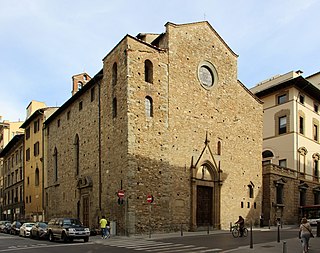
Santa Maria Maggiore di Firenze is a Romanesque and Gothic-style, Roman Catholic church in Florence, region of Tuscany, Italy. This is among the oldest extant churches in Florence.
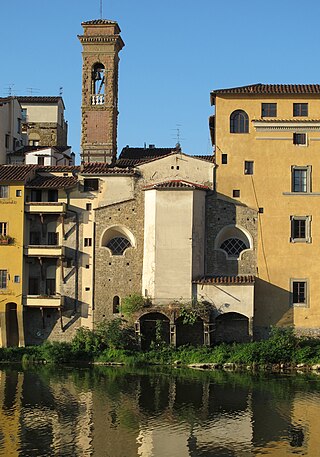
San Jacopo sopr'Arno is a church in Florence, Italy.

San Marco is a religious complex in Florence, Italy. It comprises a church and a convent. The convent, which is now the Museo Nazionale di San Marco, has three claims to fame. During the 15th century it was home to two famous Dominicans, the painter Fra Angelico and the preacher Girolamo Savonarola. Furthermore, the church houses the tomb of Pico Della Mirandola, a Renaissance philosopher and the so called "Father of Humanism."
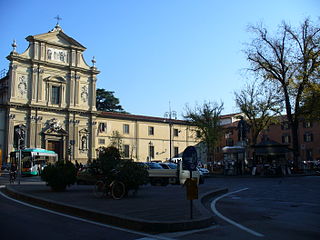
Museo Nazionale di San Marco is an art museum housed in the monumental section of the medieval Dominican convent of San Marco dedicated to St Mark, situated on the present-day Piazza San Marco, in Florence, a region of Tuscany, Italy.
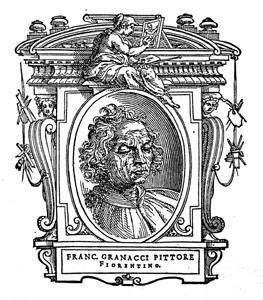
Francesco Granacci was an Italian Renaissance painter active primarily in his native Florence. Though little-known today, he was regarded in his time and is featured in Giorgio Vasari's Lives of the Artists.

Gherardo Silvani (1579–1675) was an Italian architect and sculptor, active mainly in Florence and other sites in Tuscany during the Baroque period.

San Gaetano, also known as Santi Michele e Gaetano, is a Baroque church in Florence, Italy, located on the Piazza Antinori, entrusted to the Institute of Christ the King Sovereign Priest.

Pistoia Cathedral, or Cathedral of Saint Zeno is the main religious building of Pistoia, Tuscany, central Italy, located in the Piazza del Duomo in the centre of the city. It is the seat of the Bishop of Pistoia and is dedicated to Saint Zeno of Verona.

The Palazzo di Parte Guelfa is a historical building in Florence, central Italy. During the Middle Ages, it was the headquarters of the Guelph party in the city.

Palazzo di San Clemente is a residential palace in Florence, Italy.

Santo Stefano dei Cavalieri is a church in central Pisa located on Piazza dei Cavalieri.
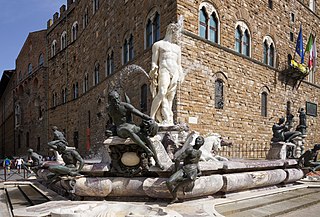
The Fountain of Neptune in Florence, Italy, is situated in the Piazza della Signoria, in front of the Palazzo Vecchio. The fountain was commissioned by Cosimo I de' Medici in 1559 to celebrate the marriage of Francesco de' Medici I to Grand Duchess Joanna of Austria. Cosimo I de' Medici was the Duke of Florence from 1537-1569 and responsible for a vast number of architectural and artistic elements in Florence that still exist today.

The Casino Mediceo di San Marco is a late-Renaissance or Mannerist style palace located on Via Cavour number 57 and via San Gallo in Florence, region of Tuscany, Italy.
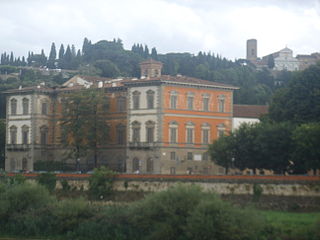
Palazzo Serristori is a Renaissance style palace located between Piazza Demidoff and the Lungarno Serristori in Oltrarno, in the neighborhood of San Niccolò of Florence, region of Tuscany, Italy.
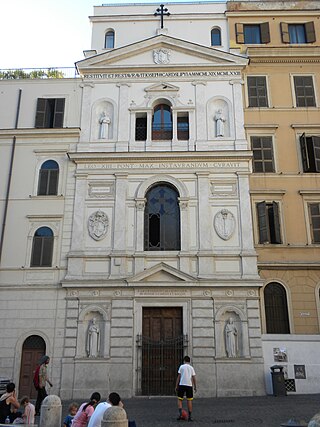
The Ukrainian Catholic Apostolic Exarchate of Italy is an Apostolic Exarchate of the Ukrainian Greek Catholic Church covers its faithful in Italy and San Marino.
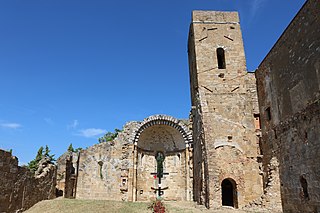
The Abbey of the Holy Savior and of Sts. Justin and Clement, also known as the Camaldolese Abbey of St. Justin, is a former Italian monastery in the city of Volterra, Pisa, which was founded in the 11th century. It was a major religious institution of the region until it was initially abandoned by the monks due to earthquake damage in the 19th century and then taken over and dissolved under the Risorgimento movement for the political unification of the Italian peninsula. For most of its history, it operated as a monastery of Camaldolese monks.





















